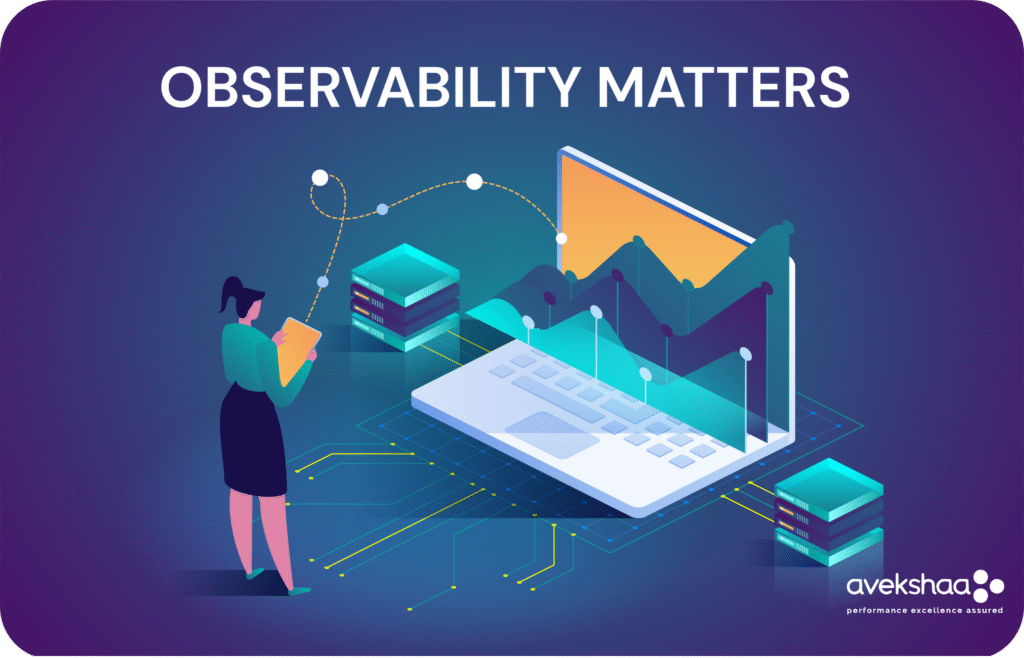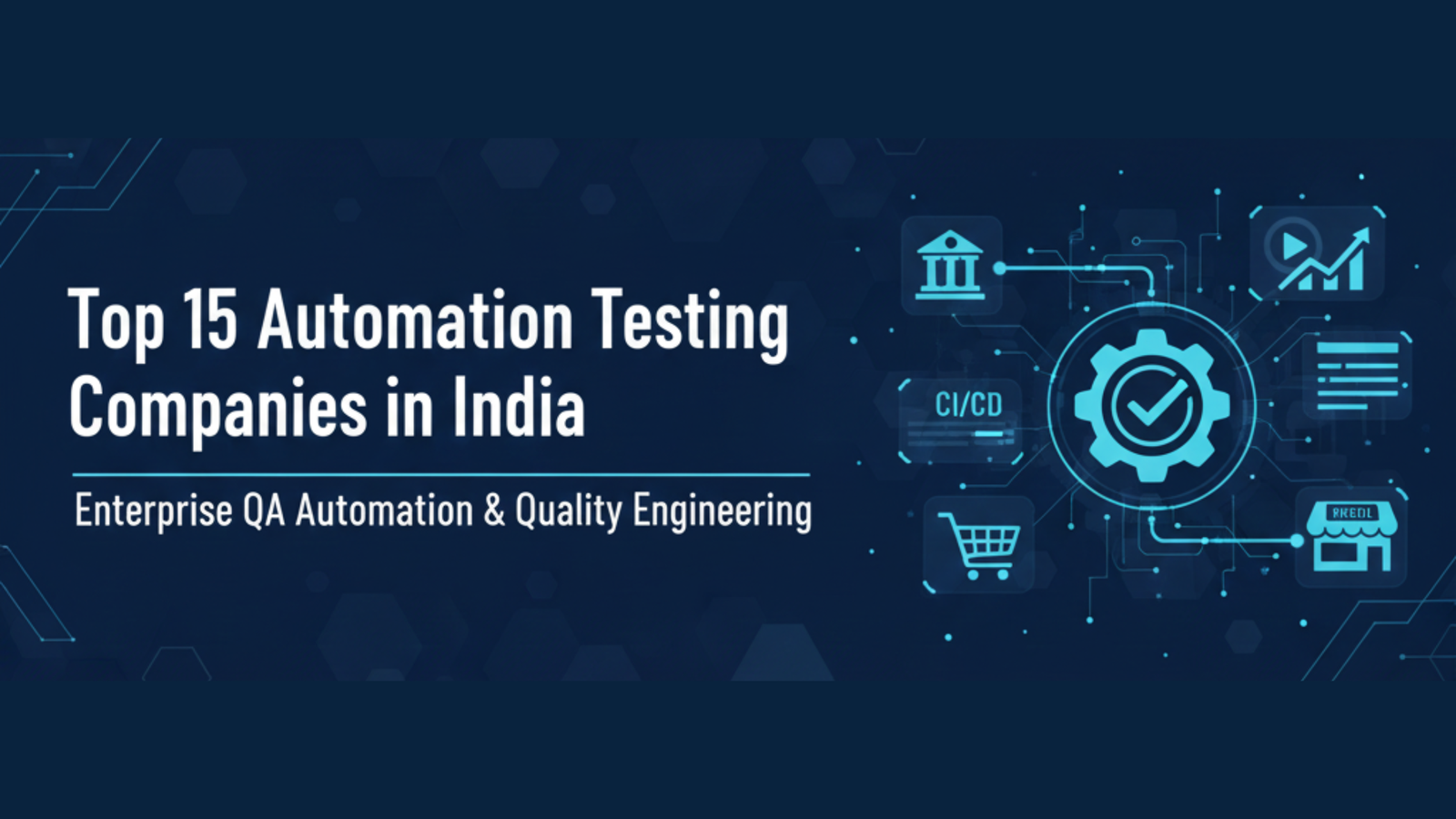Simply put, observability is the ability to understand what’s happening within a complex system. In the modern IT and software development sphere, this is usually done by analyzing the data it produces and demands gathering and correlating different metrics, logs, traces, and events for drawing real-time insights from the system behavior. This is in sharp contrast to traditional monitoring, which can only underline what is wrong. Observability, on the other hand, helps pinpoint what exactly is wrong, where, and why.
So, for businesses that run mission-critical applications, especially for industries like BFSI, telecom, and healthcare, observability happens to be a non-negotiable element to ensure uptime, top-notch performance, and increased customer satisfaction.
Why Observability Matters More in 2025 and Beyond
Observability is critical in helping modern enterprises reduce downtime, optimize performance, and deliver exceptional digital experiences.
Rising Complexity
With microservices, multi-cloud environments, and container orchestration becoming the norm, IT infrastructures are more complex than ever. A 2024 industry survey reported that 88% of tech leaders believe their stacks have become significantly harder to manage in the last year.
Faster Troubleshooting
Observability accelerates root cause analysis. Companies with mature observability resolve issues 69% faster and experience 90% less downtime cost than their peers.
Proactive Incident Management
Observability enables early detection through anomaly detection and AI/ML models, often flagging issues before they become customer-impacting outages.
Business Value
Downtime in BFSI alone costs companies an average of $152 million annually. With observability, companies can minimize this loss, improve customer experience, and ensure SLA compliance.
The Four Pillars of Observability
These foundational telemetry sources work together to offer a comprehensive view of your systems’ internal states.
- Metrics: Time-stamped numerical data such as CPU usage, memory, response times, etc. Metrics help track trends and system health.
- Logs: Detailed, text-based records of events. They provide the contextual breadcrumbs needed to debug errors.
- Traces: Follow the full journey of a request across multiple systems. Traces show latency, errors, and bottlenecks.
- Events: Discrete system state changes (e.g., deployment or user login) that help correlate performance issues with specific activities.
Together, these data types give teams a 360-degree view of their digital ecosystem.
Observability Use Cases in BFSI, Telecom & Healthcare
Different industries have different priorities but observability consistently delivers higher reliability, resilience, and user satisfaction across different sectors. Here’s a closer look at some of the most potent use cases across BFSI, telecom, and healthcare.
BFSI (Banking, Financial Services, Insurance)
Challenge:
The BFSI sector operates under extreme pressure, massive transaction volumes, round-the-clock services, and tight regulatory oversight are non-negotiables. Even a few seconds of downtime or a missed compliance log can cost millions, damage reputation, and invite penalties. Traditional monitoring tools often fall short in capturing the complex, interdependent systems powering everything from ATMs to online trading platforms.
Observability Impact:
Modern observability solutions bring deep visibility across every layer from APIs to databases to third-party integrations. Real-time dashboards monitor payment gateway performance, detect latency spikes, and flag transaction anomalies instantly. Advanced telemetry pipelines feed machine learning models that can identify patterns of potential fraud even before they escalate.
Result:
Banks and financial institutions gain customer trust through consistent uptime, reduced incident response times, and more transparent audit trails. Regulatory reporting becomes streamlined, and teams can pinpoint issues before regulators or customers do.
Telecom
Challenge:
Telecom networks are vast, dynamic, and under constant load. Supporting millions of concurrent users, thousands of towers, and sprawling edge infrastructure all while ensuring 24/7 service makes downtime and degraded quality (like jitter or latency) unacceptable. Legacy monitoring can’t keep up with the scale or velocity of change.
Observability Impact:
Observability platforms ingest real-time network metrics across distributed nodes, enabling early detection of anomalies like packet loss, signal degradation, or routing delays. Visualizing service maps and correlating metrics with logs allows network engineers to isolate congestion points before they snowball into outages.
Result:
Telecom providers enjoy improved uptime SLAs, faster root cause analysis, and more proactive customer service. When issues are resolved before subscribers even notice, churn goes down and trust goes up.
Healthcare
Challenge:
In healthcare IT, reliability isn’t just a metric, it’s a matter of life and death. Systems like Electronic Health Records (EHRs), lab diagnostics, pharmacy interfaces, and ICU monitors need to be always-on. Even a minor lag in a clinical system can delay treatment decisions or compromise patient safety. Add to that the pressures of HIPAA, GDPR, and other regulatory frameworks and the margin for error becomes zero.
Observability Impact:
Observability solutions empower healthcare IT teams to track end-to-end system performance from application latency in EHRs to integration errors between lab equipment and central systems.
Anomalies are flagged in real-time, often before they impact clinical workflows. Custom alerts help identify performance dips, integration breakdowns, or unusual access patterns all of which are critical for compliance and operational continuity.
Result:
Hospitals and healthcare providers benefit from faster response times, more stable systems during critical hours, and smoother compliance audits. Ultimately, observability helps healthcare organizations deliver better patient care through more reliable digital infrastructure.
Market Trends and Adoption Stats
The observability landscape is undergoing a seismic shift and it’s not just hype. As digital experiences become core to every business, observability is now table stakes for performance, security, and customer retention.
- 70% of organizations now have centralized observability (Grafana, 2023), reflecting a growing consensus that siloed monitoring tools no longer cut it in a cloud-native world.
- Mature observability users report 79% less downtime (New Relic, 2024), underscoring the direct impact on uptime, SLAs, and team productivity.
- However, tool sprawl remains a pain point: 70% of companies use 4 or more observability tools, leading to higher overhead and fragmented insights.
- Enter AI/ML-powered observability (AIOps), the fastest-growing trend. These systems process millions of logs, traces, and metrics in real time, surfacing issues and root causes automatically. They’re helping teams move from “find and fix” to “predict and prevent.”
In short, observability is no longer just about keeping the lights on, it’s a competitive differentiator that directly impacts revenue, resilience, and innovation speed.
How Avekshaa Technologies Delivers Observability
Contrary to what many believe, observability isn’t just about monitoring tools, it’s about unlocking deep operational intelligence to drive business outcomes. Avekshaa Technologies empowers enterprises with tailored observability strategies that go far beyond generic solutions.
With a blend of domain expertise, platform-agnostic integrations, and outcome-focused frameworks, Avekshaa enables organizations to proactively manage system performance, availability, and scalability while aligning every insight with core business goals.Avekshaa empowers enterprises with tailored observability strategies that go beyond tool adoption and deliver measurable business outcomes.
- Strategic Implementation: Avekshaa helps design observability frameworks tailored to your stack, integrating across cloud, microservices, legacy apps, and user endpoints.
- Unified Dashboards: Get real-time, role-specific dashboards. CIOs get KPIs, DevOps get traces and alerts all aligned with business SLAs.
- Tool Consolidation: Instead of tool sprawl, Avekshaa integrates best-in-class platforms (Dynatrace, Datadog, OpenTelemetry) to avoid data silos and reduce costs.
- P-A-S-S™ Assurance Platform: Built on Performance, Availability, Scalability, Security. Avekshaa uses observability data to resolve bottlenecks and ensure ongoing system health. Clients have seen 2x–10x ROI on performance improvements.
- End-to-End Support: From assessment to implementation to performance tuning, Avekshaa acts as your extended observability and SRE team.
Why Avekshaa vs. Typical Vendors?
Choosing Avekshaa means choosing a partner who translates observability into sustained operational excellence. Most observability vendors sell tools but Avekshaa delivers outcomes. Our deep expertise ensures:
- Actionable insights, not just dashboards
- Faster ROI through performance optimization
- Compliance-ready observability in regulated industries
Time To Embrace Observability That Drives Outcomes
Understanding what observability is isn’t just an academic exercise, it’s a strategic imperative. With Avekshaa, observability becomes more than telemetry; it becomes a business enabler. Let’s talk about making your systems observable, reliable, and ready for the future.


